I have a scenario for which I have to design a use case diagram, activity diagram and a class diagram:
“I run a small computer consultancy firm with a number of employees. Along with the basic information about the employees (name, DoB, contact details, etc.) I need to be able to keep track of what type of role they perform, such as Hardware Technician, Programmer, and Software Installer. A single employee can perform multiple roles, and each role has an associated hourly pay. I need to keep name and contact details of all customers that have a contract with us. A customer can have multiple contracts at the same time, but each contract is only associated with one customer. Each contract has a name, a description, a creation date, and a job type – e.g. System Development, Software Upgrade. No details of job types need to be captured other than their name. Each contract also has a single employee designated as the project leader. One employee may be the project leader of multiple contracts.”
I have tried to draw a use case diagram and I want to know if I have drawn it correct and if there are any mistakes or any improvements that should be made:
